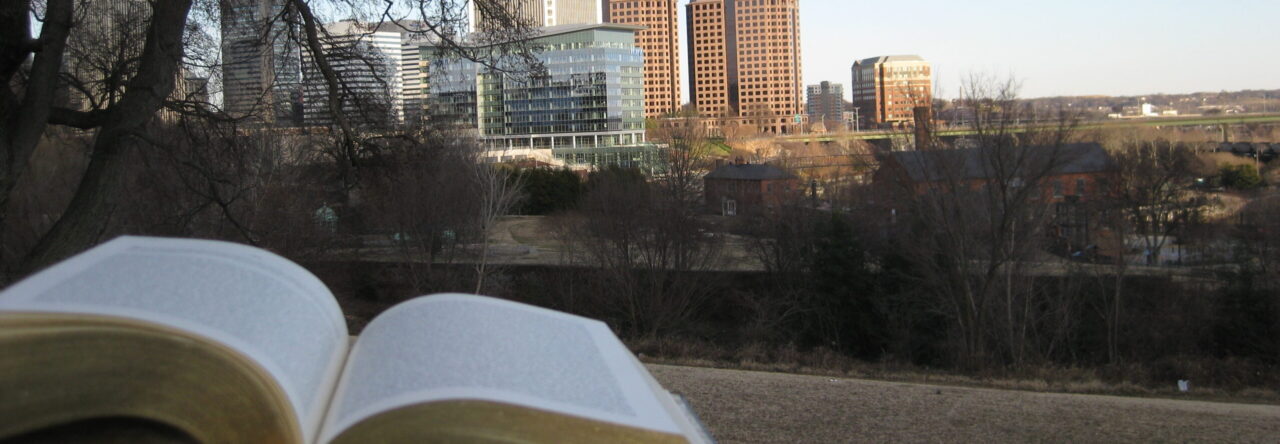Before class, I had already done some research on the burial ground for the annotated bibliography assignment, so I knew it would not look like a traditional cemetery due to the decades of development and destruction that the land had experienced. I didn’t quite know what to expect, since my research had stopped before the land was completely recovered for the purpose of historical preservation.

During class, I took a picture of the burial ground as an expanse of land. I wrote on my index card that the telephone poles sticking out of the grass reminded me of the pictures we see sometimes of floods, where water covers everything and the telephone poles are the only signs that people had existed at all. I wonder if that could be connected to the burial ground as well – we can’t physically see the evidence of what happened in the space because it was covered up, but there’s a presence there that almost alludes to it, in a way. I’ll quote myself from Thursday: “In the absence of the physical representation of the structure (the lack of a traditional cemetery landscape), there was a ghostly type of presence. A ‘presence’ in and because of the absence.” People can be remarkably perceptive – we can notice the slightest shift in physical conditions, but we also pick up on intuitive or social changes. I think the space has enough of an ethereal (ghostly? spectral?) presence to affect even someone who visited without knowing its history.

Leave a Reply